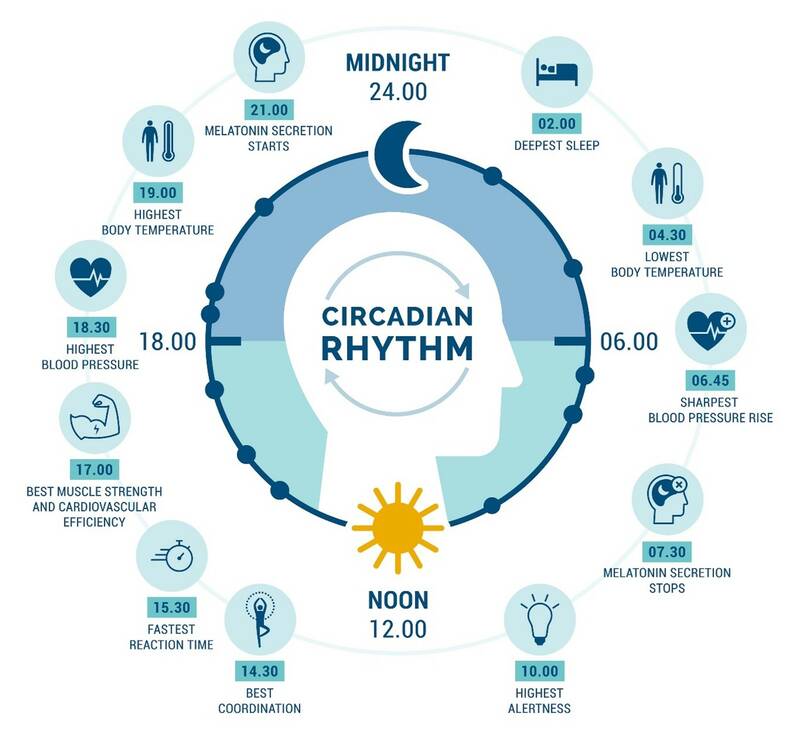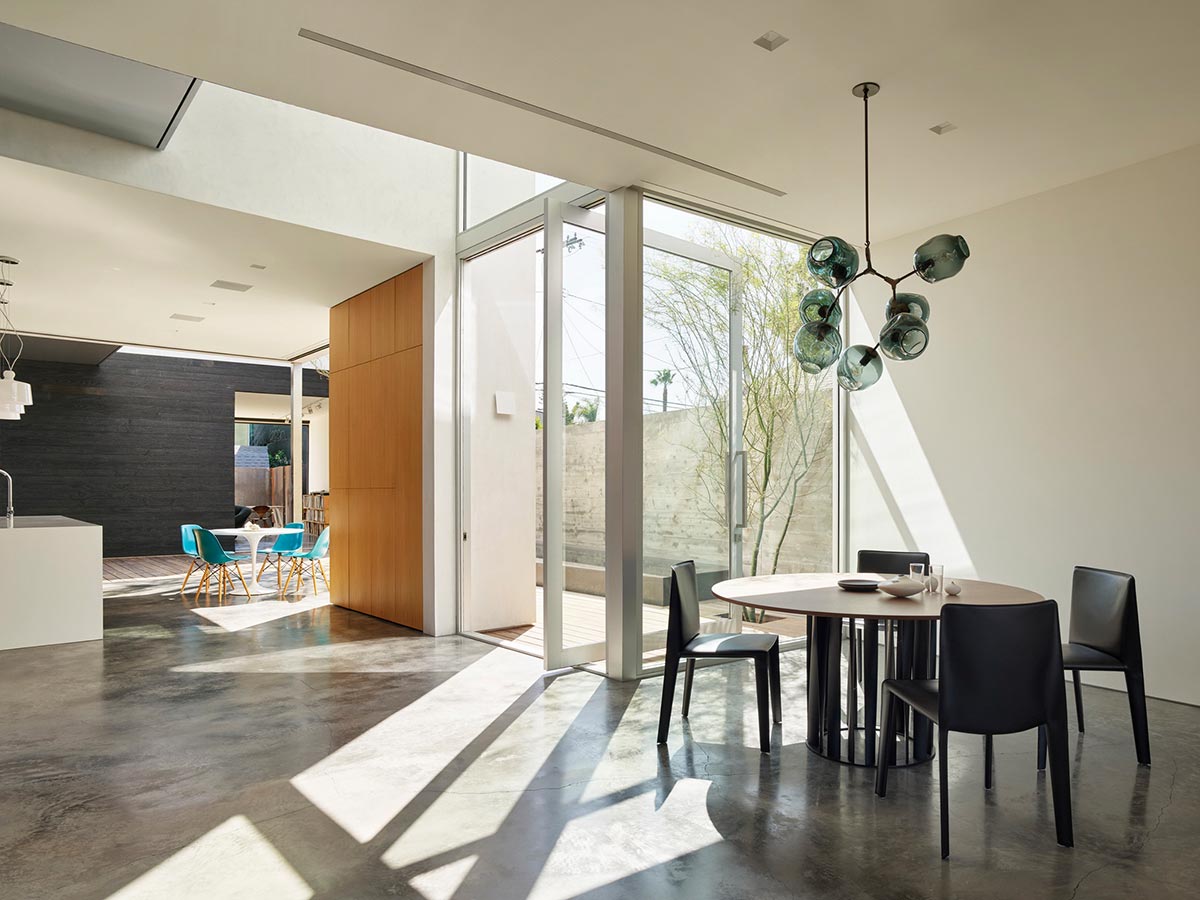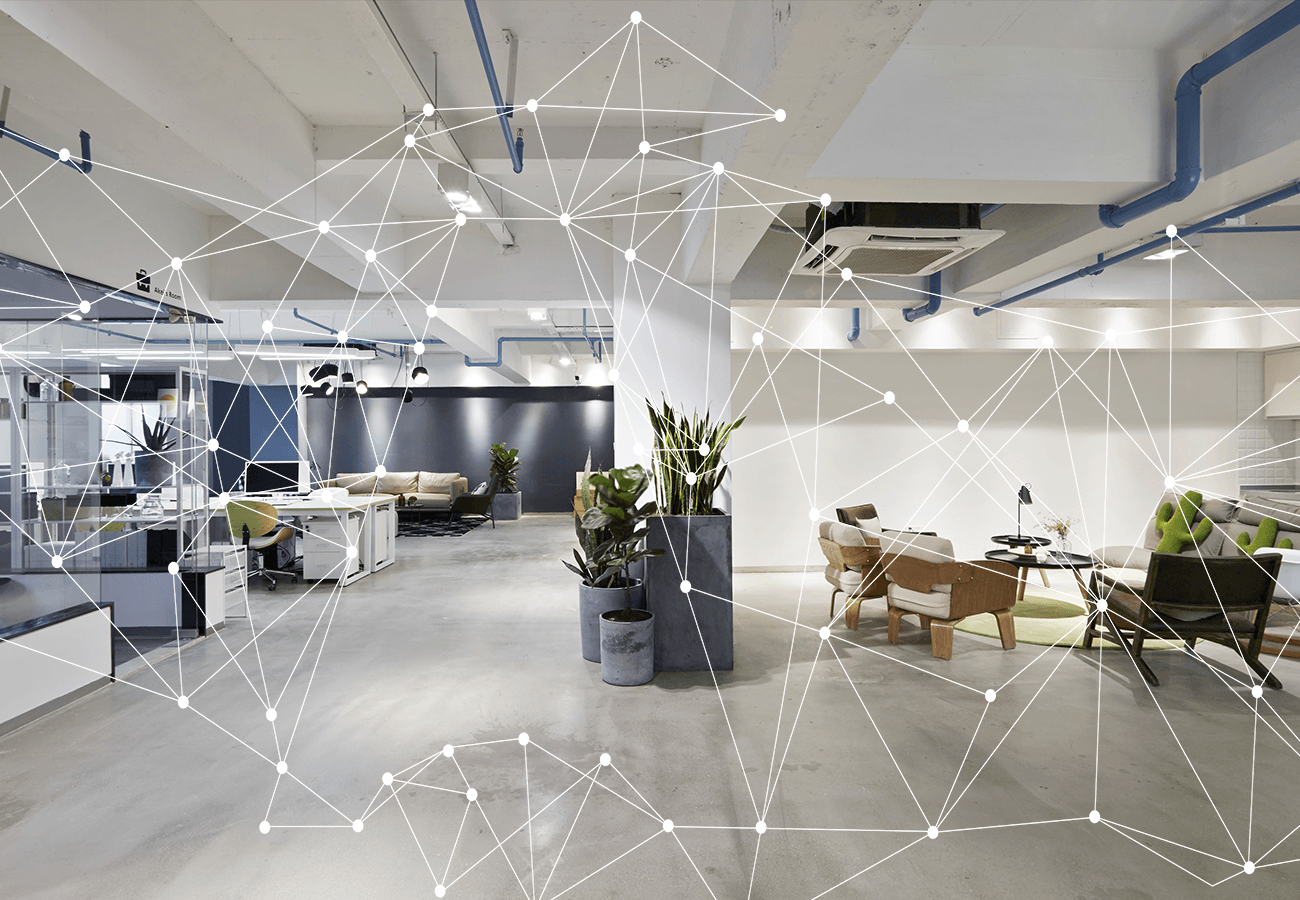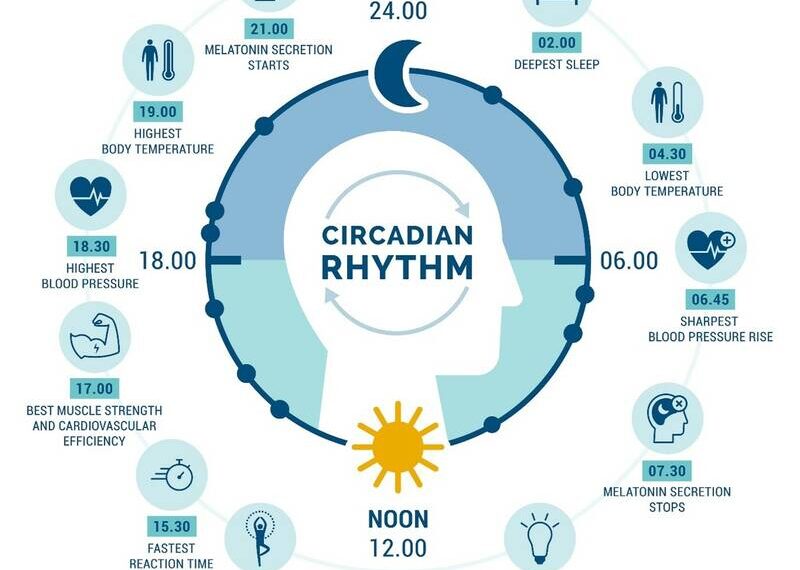Welcome to the world of human-centric lighting, where the power of light is harnessed to enhance productivity, well-being, and overall quality of life. In this blog series, we will explore the revolutionary impact of human-centric lighting on architectural design and its potential to transform the way we work, live, and interact with our environment. From understanding the key principles and benefits of human-centric lighting to designing innovative lighting solutions that integrate natural light and circadian lighting techniques, we will delve into the strategies and best practices for implementing human-centric lighting in architectural projects. We will also discuss the role of technology in driving advancements in lighting design and its impact on creating dynamic lighting environments that maximize productivity. Furthermore, we will explore how human-centric lighting can address health and wellness concerns, and the importance of collaborating with lighting design professionals to achieve successful human-centric solutions. Join us on this journey as we uncover the future of human-centric lighting in architectural design, and the potential it holds for shaping a brighter, more productive, and healthier built environment.
Understanding the Impact of Human-Centric Lighting

Credits: radiantvisionsystems.com
Human-centric lighting has revolutionized the way we think about lighting in our workspaces. By mimicking the natural changes in daylight throughout the day, human-centric lighting can have a profound impact on our productivity. The dynamic nature of this lighting system helps to regulate our circadian rhythm, leading to improved focus, alertness, and overall well-being.
The benefits of human-centric lighting extend beyond simply providing adequate illumination. By incorporating principles of color temperature, intensity, and timing, human-centric lighting creates an environment that is conducive to productivity. Studies have shown that employees working in spaces with human-centric lighting report higher levels of satisfaction, lower levels of fatigue, and increased productivity. This innovative approach to lighting design is truly a game-changer in the modern workplace.
In today’s fast-paced and demanding work environments, it’s more important than ever to prioritize the well-being and productivity of employees. Human-centric lighting offers a holistic solution that not only meets the practical needs of illumination but also addresses the psychological and physiological aspects of lighting. By understanding the impact of human-centric lighting, businesses can create a work environment that fosters creativity, collaboration, and efficiency.
Designing Human-Centric Lighting Solutions

Credits: connect.eyrc.com
Choosing the right color temperature is crucial for creating a human-centric lighting solution. By selecting warmer color temperatures for relaxing areas and cooler color temperatures for task-oriented spaces, we can significantly impact the mood and productivity of individuals. The right color temperature can help improve focus, reduce eye strain, and create a more comfortable environment for work or relaxation.
Integrating natural light into lighting designs is a game-changer for human-centric productivity. By strategically placing windows, skylights, or light tubes, we can maximize the use of natural light, which has been proven to positively affect mood and energy levels. Incorporating natural light sources into our designs also reduces the reliance on artificial lighting, leading to energy savings and a more sustainable approach to lighting solutions.
Applying circadian lighting techniques is another innovative way to boost productivity through human-centric lighting. By mimicking the natural patterns of sunlight throughout the day, circadian lighting can regulate sleep-wake cycles, improve alertness, and enhance overall well-being. By syncing our lighting designs with the body’s natural rhythms, we can create an environment that promotes productivity and overall health for the individuals within the space.
Implementing Human-Centric Lighting in Architectural Projects

Credits: casambi.com
Are you ready to revolutionize the way lighting is integrated into architectural designs? Human-centric lighting has the power to transform the productivity and well-being of building occupants, and it’s time to harness that potential. By implementing lighting solutions that are specifically designed to support human circadian rhythms and visual comfort, architects can create spaces that not only look stunning but also enhance the overall experience for the people who inhabit them.
While the concept of human-centric lighting may seem complex, there are best practices that can guide architects through the process. From understanding the science behind circadian lighting to selecting the right fixtures and controls, there are key considerations that can make implementation seamless. By learning from successful case studies and staying informed about the latest developments in lighting technology, architects can overcome common challenges and ensure that their projects truly prioritize the well-being and productivity of the people who use them.
Imagine the impact of a lighting system that not only illuminates a space but also contributes to the health and productivity of its occupants. Human-centric lighting has the potential to elevate architectural projects to a new level, creating environments that are not only visually stunning but also supportive of human well-being. By embracing the principles of human-centric lighting and integrating them into architectural designs, architects have the opportunity to shape spaces that enhance the lives of the people who inhabit them.
Maximizing Productivity with Human-Centric Lighting
Say goodbye to the days of dull, static lighting in the workplace. Human-centric lighting is revolutionizing the way we think about productivity. By creating dynamic lighting environments that mimic natural daylight, employees are experiencing higher levels of alertness and focus. Imagine walking into a well-lit office space that adjusts its lighting throughout the day to match the natural patterns of sunlight. This not only enhances mood and energy levels but also has a direct impact on productivity.
With the utilization of lighting controls, businesses can tailor the lighting to suit specific tasks and activities. Whether it’s a bright, stimulating light for brainstorming sessions or a softer, warmer glow for relaxation and collaboration, human-centric lighting can be adjusted to meet the needs of employees. This level of customization allows for optimal working conditions, resulting in improved productivity and overall well-being.
Measuring the impact of human-centric lighting on productivity is essential for businesses looking to enhance their work environments. Studies have shown that employees working in spaces with human-centric lighting report feeling more engaged, motivated, and productive. By investing in this innovative lighting technology, businesses can create a positive and stimulating work environment that ultimately leads to increased productivity and success.
The Role of Technology in Human-Centric Lighting
The world of lighting technology has seen remarkable advancements in recent years, particularly in the realm of human-centric lighting. With the development of LED and smart lighting systems, it has become possible to tailor lighting solutions to the specific needs of individuals and environments. These technological breakthroughs have paved the way for a new era of lighting design that prioritizes the well-being and productivity of people.
Innovative lighting control systems have also played a crucial role in the evolution of human-centric lighting. From automated adjustments based on natural light levels to customizable settings that accommodate different tasks and preferences, these systems have revolutionized the way we interact with light. By harnessing the power of technology, human-centric lighting has become more versatile and effective than ever before, offering a dynamic range of options to enhance productivity and overall comfort.
The integration of IoT (Internet of Things) in human-centric lighting has further expanded the possibilities in this field. By connecting lighting systems to smart devices and networks, it is now possible to create more personalized and responsive lighting environments. This connectivity not only allows for greater control and flexibility but also opens up opportunities for data-driven insights and optimizations. As a result, human-centric lighting has evolved into a sophisticated and adaptive solution that can significantly boost productivity and well-being in various settings.
Addressing Health and Wellness with Human-Centric Lighting
Human-centric lighting has revolutionized the way we approach health and wellness in our workspaces. By considering the impact of lighting on mental well-being, we are able to create environments that support and uplift our employees. Gone are the days of harsh, fluorescent lighting that can contribute to eye strain and fatigue. With human-centric lighting, we can create a more natural, dynamic lighting experience that promotes positivity and mental clarity.
In addition to mental well-being, human-centric lighting also plays a crucial role in supporting physical health. By mimicking natural light patterns, this innovative lighting design can help regulate our circadian rhythms, improve sleep quality, and boost energy levels throughout the day. This not only leads to happier and healthier employees, but also enhances overall productivity in the workplace. It’s truly remarkable how simple adjustments to our lighting can have such profound effects on our well-being.
When implementing human-centric lighting, it’s important to consider regulatory requirements and guidelines. By staying informed and compliant with industry standards, businesses can ensure that their lighting solutions are optimized for the health and wellness of their employees. This includes factors such as light intensity, color temperature, and timing of exposure. By prioritizing human-centric lighting, companies can create work environments that truly prioritize the well-being and productivity of their workforce.
Collaborating with Lighting Designers for Human-Centric Solutions
Working with lighting design professionals can bring a whole new level of expertise to the table when it comes to creating human-centric lighting solutions. These professionals understand the science behind lighting and how it affects human productivity, mood, and overall well-being. By collaborating with them, businesses can ensure that their lighting solutions are not only aesthetically pleasing but also optimized for human performance.
When collaborating on lighting projects, it’s essential to consider the specific needs and preferences of the people who will be using the space. Lighting designers can help tailor the lighting solutions to meet the unique requirements of the environment, whether it’s an office, retail space, or healthcare facility. Their expertise can ensure that the lighting is not only functional but also enhances the overall experience for the occupants.
Successful collaborations with lighting designers have led to innovative and impactful lighting solutions that have significantly boosted productivity and well-being in various settings. From dynamic lighting systems that mimic natural daylight to personalized lighting control options, the possibilities are endless when businesses partner with lighting design professionals to create human-centric lighting solutions.
Educating Clients and Stakeholders on Human-Centric Lighting
Are you ready to revolutionize your workspace with human-centric lighting? We’re here to enlighten you on the incredible benefits of this innovative lighting design. From boosting productivity to enhancing mood and well-being, human-centric lighting has the power to transform your environment. It’s time to educate your clients and stakeholders on the game-changing impact of human-centric lighting.
Let’s debunk the myths and misconceptions surrounding lighting design. Many people believe that lighting is simply about illuminating a space, but human-centric lighting goes beyond that. It’s about creating an environment that supports human health and performance. By addressing these misconceptions, you can help your clients and stakeholders understand the true value of human-centric lighting and how it can positively impact their daily lives.
Looking for tools to showcase the value of human-centric lighting to your clients and stakeholders? We’ve got you covered. Whether it’s case studies, interactive demonstrations, or virtual simulations, there are various ways to effectively communicate the benefits of human-centric lighting. By providing tangible examples and evidence, you can make a compelling case for integrating human-centric lighting into your projects. It’s time to empower your clients and stakeholders with the knowledge they need to make informed decisions about their lighting design.
The Future of Human-Centric Lighting in Architectural Design
The future of human-centric lighting in architectural design is an exciting prospect, with emerging trends paving the way for innovative applications. As technology continues to advance, the potential impact of new lighting solutions on human productivity and well-being is becoming increasingly clear. From circadian lighting systems to personalized lighting control, the possibilities for enhancing human-centric design are virtually limitless.
One of the most exciting aspects of the future of human-centric lighting is the potential to address the challenges of modern work environments. With the rise of remote work and flexible schedules, there is a growing need for lighting solutions that can support productivity and wellness in diverse settings. By integrating advanced technologies and holistic design principles, architects and lighting designers can create environments that cater to the specific needs of individuals, ultimately boosting productivity and satisfaction.
As we look ahead, the future of human-centric lighting presents both challenges and opportunities for development. From overcoming technical hurdles to maximizing the potential of biophilic design, there is a need for collaboration and innovation across various disciplines. By embracing the possibilities of human-centric lighting, the architectural community can shape a future where lighting not only illuminates spaces, but also enhances the human experience in meaningful ways.
At lichthub.com, we understand the importance of lighting in architectural design. Our blog is dedicated to providing architects and designers with the inspiration and guidance they need to illuminate their projects effectively. With a focus on architectural lighting design, we offer valuable insights, tips, and resources to help our audience create stunning and functional lighting solutions for their projects. Whether you are looking for the latest lighting trends, innovative design ideas, or practical advice on lighting fundamentals, lichthub.com is your go-to resource for all things related to architectural lighting design. Join our community and let us help you bring your projects to light.
Frequently Asked Questions
1. What is human-centric lighting?
Human-centric lighting refers to lighting systems that are designed to support the natural circadian rhythm of human beings, promoting better sleep, mood, and overall well-being.
2. How does human-centric lighting boost productivity?
Human-centric lighting can boost productivity by aligning lighting conditions with the natural biological needs of individuals. It helps regulate sleep-wake cycles, enhances alertness, reduces eye strain, and improves overall mood and focus.
3. What are the key features of human-centric lighting?
Key features of human-centric lighting include adjustable color temperature, intensity control, dynamic lighting changes throughout the day, and the ability to mimic natural daylight patterns.
4. Can human-centric lighting be used in different environments?
Yes, human-centric lighting can be used in various environments such as offices, schools, healthcare facilities, and residential spaces. It can be customized to meet the specific needs of each environment.
5. Are there any scientific studies supporting the benefits of human-centric lighting?
Yes, there are numerous scientific studies that have shown the positive effects of human-centric lighting on productivity, mood, sleep quality, and overall well-being. These studies provide evidence for the effectiveness of implementing such lighting systems.
TL;DR: Human-centric lighting has a significant impact on productivity, health, and wellness in architectural design. Understanding the principles and benefits of human-centric lighting, as well as collaborating with lighting design professionals, is crucial for successful implementation. Advancements in technology and emerging trends also play a key role in shaping the future of human-centric lighting.








